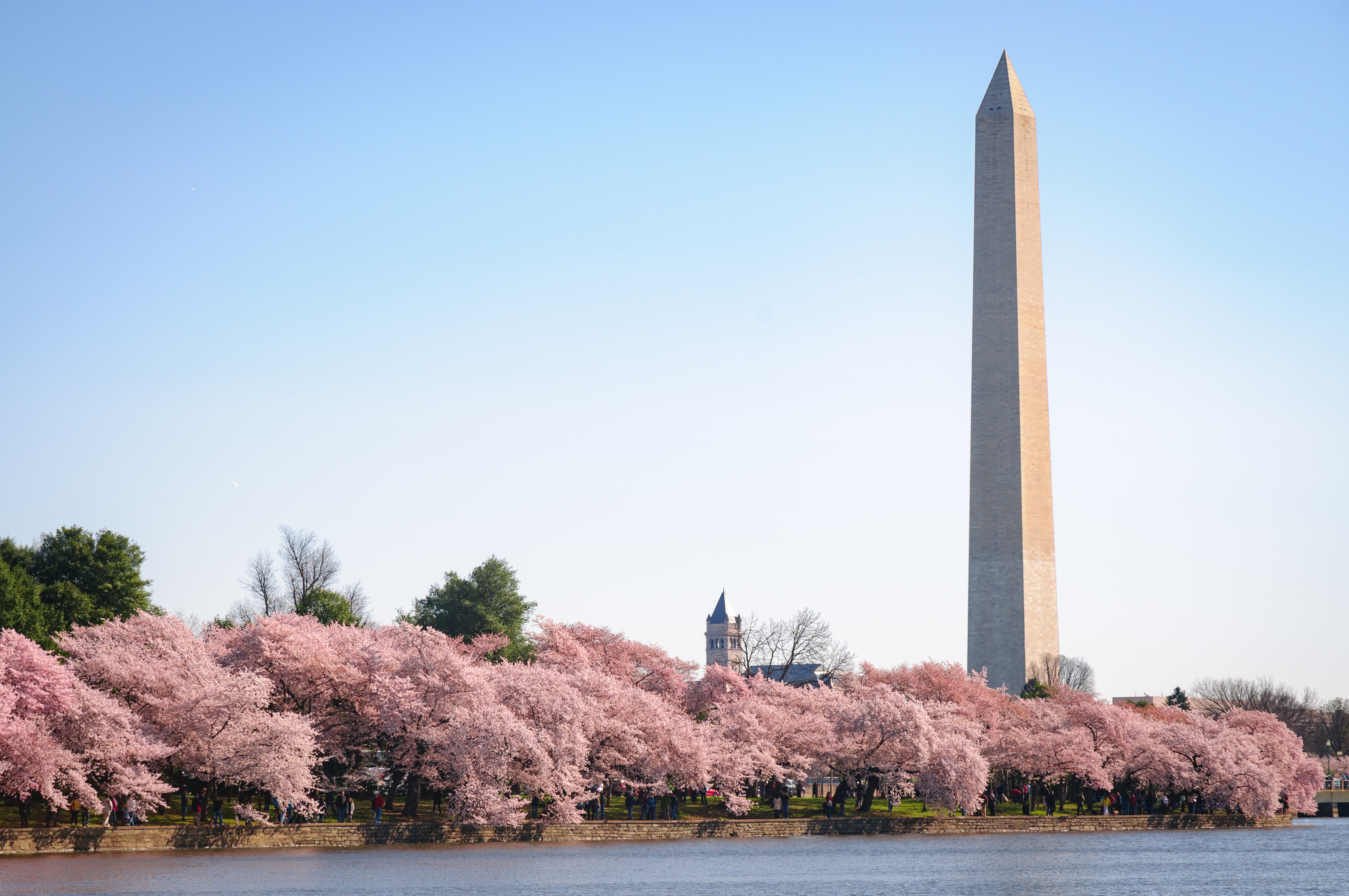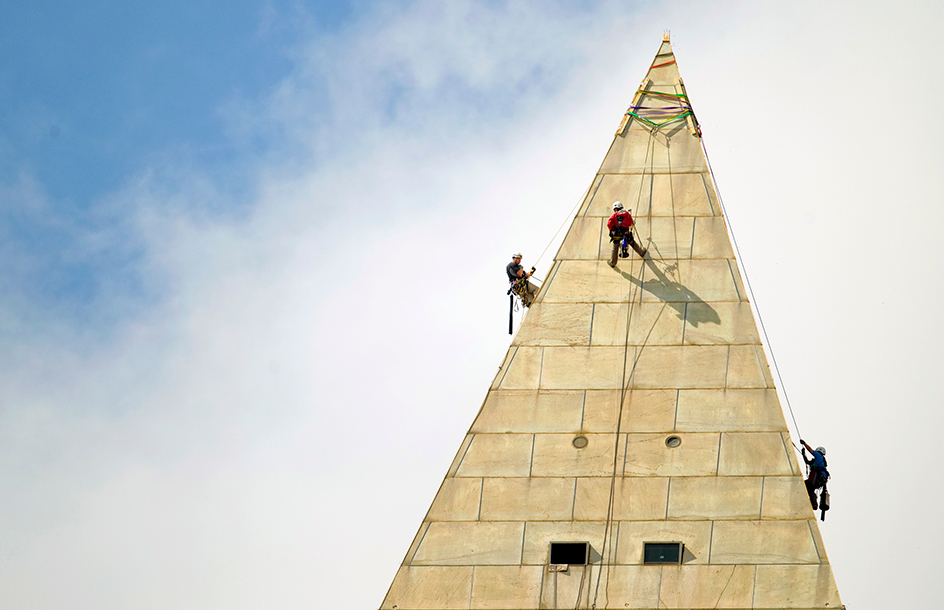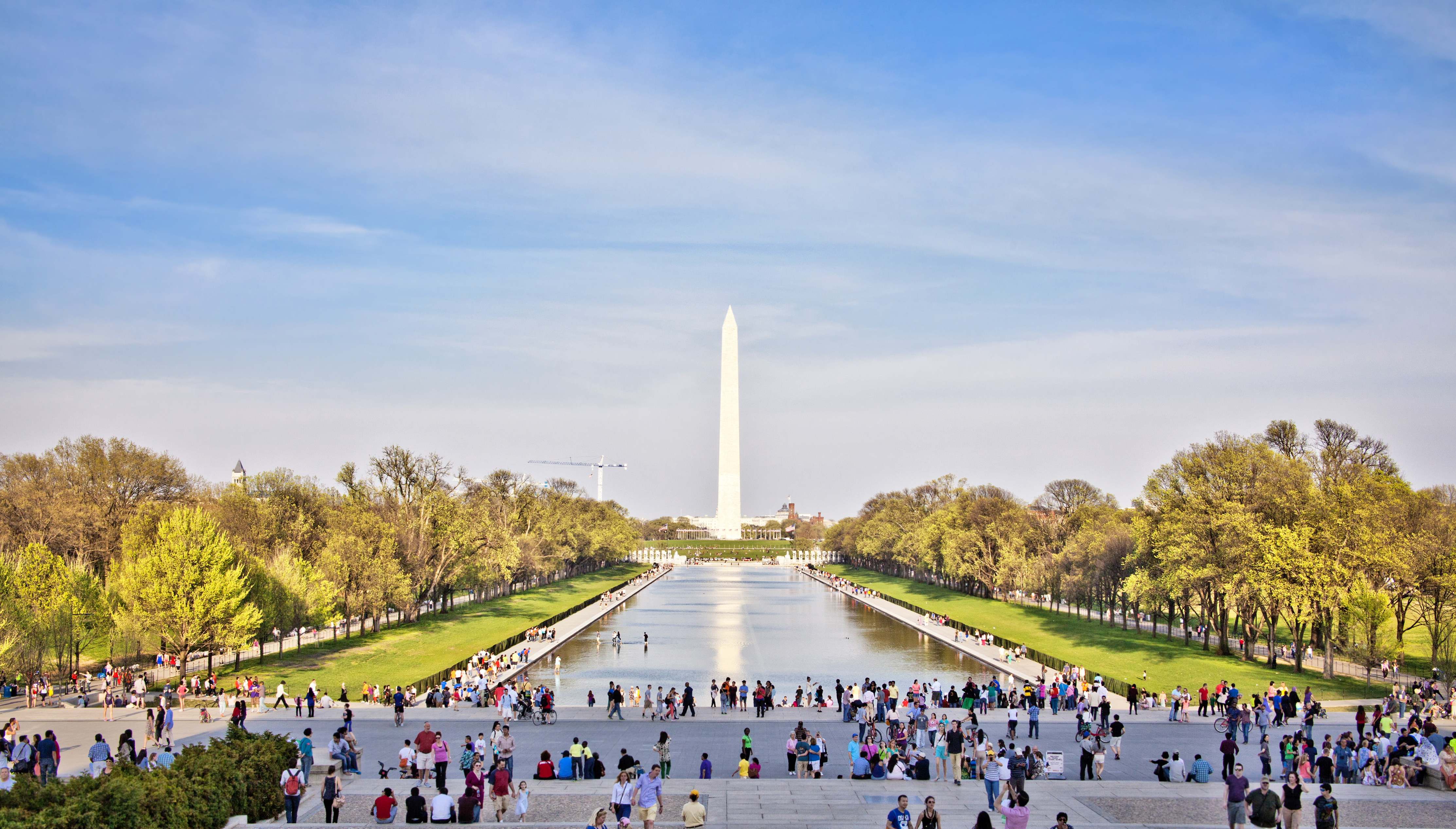Washington Monument is a great obelisk built in honor of George Washington. It stands in Washington, D.C., near the Potomac River, about halfway between the Capitol and the Lincoln Memorial.

The monument has the shape of the obelisks of ancient Egypt, but it is several times larger than they were. It is 555 feet 51/8 inches (169.29 meters) high, and measures 55 feet 11/2 inches (16.9 meters) along each of its four sides at the bottom. The sides slant gradually inward as they rise to the base of the pyramidion (small pyramid) which tops the pillar. At this point, each side of the pillar is 34 feet 51/2 inches (10.5 meters) long. The pyramidion rises 55 feet (16.8 meters). The walls of the monument are 15 feet (4.6 meters) thick at the bottom and 18 inches (46 centimeters) thick at the top. They are covered with white marble from Maryland. The stones covering the pyramidion are 7 inches (18 centimeters) thick. A cap of cast aluminum protects the tip.
Inside, the monument is hollow. The inner walls are set with 193 carved memorial stones, many of historic interest. The stones were presented by individuals, societies, cities, states, and other countries. Visitors may take an elevator to an observation area at the top of the monument. From there, the view of Washington, D.C., is impressive. The elevator that takes visitors back to the ground slows down at certain levels to allow people to see some of the commemorative stones set in the walls.
Some people planned a memorial to Washington while he was still alive, but he objected to the expense. In 1833, the Washington National Monument Society began raising funds for a monument. A design by Robert Mills had already been accepted in part. The government approved the project, and the cornerstone was laid on July 4, 1848, with the same trowel that Washington had used to lay the cornerstone of the Capitol in 1793. But engineers found the ground too soft, so they moved the site to the north.
Loading the player...Washington, the first President of the United States of America
Many people donated stones for the monument. Pope Pius IX sent a marble block from the Temple of Concord in Rome. One night in 1854, a group believed to be Know-Nothings , or members of the American Party, stole this block. This act shocked the public, and contributions almost stopped. In 1855, Congress agreed to give some financial aid to the project. But Know-Nothings broke into the society’s offices and claimed possession of the monument. In 1876, Congress voted to finish the project at government expense. Work began on Aug. 17, 1880. It was completed on Dec. 6, 1884. The monument was dedicated on Feb. 21, 1885, and opened to the public on Oct. 9, 1888. It is maintained as a national memorial by the National Park Service (NPS).
The Washington Monument was closed to the public from late 1997 to mid-2000 and again from December 2000 to February 2002 for major renovations. The $10-million project included repairing the marble exterior; rebuilding the elevator system; replacing the heating, electrical, and air-conditioning systems; and expanding the observation levels. In 2011, an earthquake caused cracks and other damage in the structure, and the Washington Monument closed again for repairs. It reopened in 2014. In 2016, the monument closed for renovations to the elevator and security systems. It reopened in September 2019.

In 1999, the National Park Service established a museum facility on the ground level to be available to the public while the monument was closed. The facility, the Washington Monument Interpretive Center, has become a permanent attraction. The center features exhibits on George Washington and the monument.


In 2015, government surveyors remeasured the monument and determined its height to be 554 feet 7 11/32 inches (169.05 meters). NPS officials stated, however, that they would continue to use the monument’s historic height—555 feet 5 1/8 inches (169.29 meters)—in brochures and other publications.
